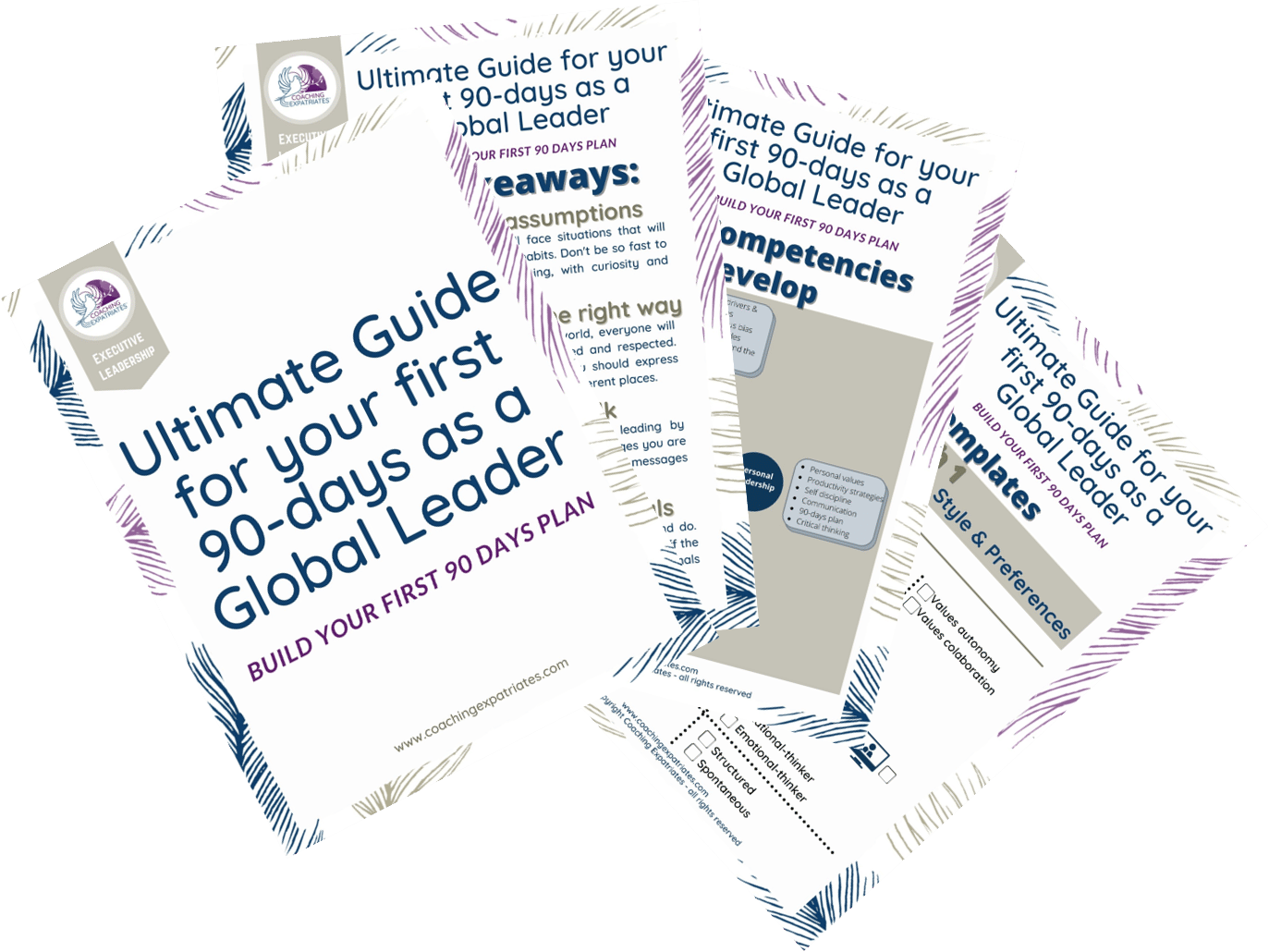Welcome to this power-packed blog post for global executives that delves into the intriguing world of influence and highlights highly effective influencing tactics in successful global leadership. In this comprehensive guide, we will unlock the secrets to masterful influence, exploring the distinction between influence and manipulation while unveiling noteworthy influencing frameworks developed by experts. Get ready to uncover the renowned ATTIC model of influence and discover various influencing tactics categories. We’ll also provide you with a curated list of 11 influential tactics and techniques you must have in your pocket. We’ll also talk about how emotions must be incorporated into your influencing strategy, which is something most executives readily overlook. Finally, we’ll wrap up with practical examples that demonstrate when influence works best and some reference books to explore more about the topic.
So, let’s dive into this captivating journey where we unlock the secrets of influence and optimize your ability to employ powerful influencing tactics.
Key Critical Reasons To Learn Influencing Skills
Effective global leadership requires a unique set of skills that each falls within one of the 4 pillars in The Global Leadership Pillars™ methodology. These skills can drive positive change across cultures and borders. Among these skills, the ability to influence others stands out as a critical attribute for successful global executives.
Let’s explore the top six reasons why developing influencing skills is essential for effective global leadership:
🌍 1. Bridging Cultural Differences 🌍
As a global leader, you encounter diverse cultures, beliefs, and perspectives. Developing influencing skills allows you to bridge cultural differences and establish meaningful connections with individuals from various backgrounds. By understanding cultural nuances, adapting your approach, and leveraging empathy, you can foster collaboration and build strong relationships, transcending cultural boundaries.
💡 2. Driving Change And Innovation 💡
Global leaders are often at the forefront of driving change and fostering innovation. Influencing skills enable you to effectively communicate your vision, inspire others to embrace change, and create a culture of innovation. By utilizing persuasive techniques and appealing to individuals’ interests and career aspirations, you can rally your teams and stakeholders around a common goal, propelling change and fostering a dynamic environment of innovation.
🤝 3. Building High-Performing Teams 🤝
Leadership is about guiding and inspiring teams toward shared objectives. Influencing skills play a vital role in building high-performing teams by effectively communicating goals, motivating individuals, and resolving conflicts. With the ability to influence, you can create a positive work culture, empower team members, and foster collaboration and synergy within diverse teams, ultimately driving exceptional results.
🔗 4. Navigating Complex Stakeholder Relationships 🔗
Global leadership often involves navigating intricate stakeholder relationships, both within and outside the organization. Influencing skills empower you to navigate these complexities with finesse. By understanding stakeholders’ interests, concerns, and motivations, you can build trust, negotiate effectively, and cultivate mutually beneficial partnerships. Influencing tactics also allow you to navigate complex networks, and matrix organizations, and ensure alignment among diverse stakeholders for successful outcomes.
🌟 5. Inspiring and Motivating Others 🌟
Influencing skills provide you with the power to inspire and motivate others. As a global leader, your ability to rally individuals around a shared vision and values is crucial. That’s what we call within The Global Leadership Pillars™ methodology as “Organizational Leadership.” By leveraging storytelling, emotional appeal, and logical persuasion during the decision-making or change-management process, you can ignite passion, engage hearts and minds, and inspire a sense of purpose among your teams and stakeholders. With effective influencing, you can unlock the full potential of individuals and drive them toward remarkable achievements.
🔀 6. Adapting To Varying Situations And Cultures 🔀
Global leadership demands adaptability to ever-changing situations and cultural contexts. Influencing skills equip you with the flexibility to tailor your approach, communication style, and influencing tactics to diverse environments. Whether it’s influencing a team in a collectivist culture or negotiating with stakeholders in a high-power distance society, your developed influencing skills allow you to navigate these complexities and achieve desired outcomes using the right influencing tactics for the right cultural contexts.
Granted, effective leadership goes beyond traditional authority and demands the ability to influence and inspire others. By developing your influencing skills, you can unlock your full potential as a global leader, bridging cultural differences, driving change and innovation, building high-performing teams, navigating complex stakeholder relationships, inspiring others, and adapting to varying situations and cultures. Investing in your influencing skills will not only enhance your leadership capabilities but also empower you to make a meaningful impact on a global scale.
Influence Vs. Manipulation: Unveiling The Distinction
Influence, persuasion, and manipulation are often used interchangeably, but they possess distinct characteristics. Influence entails the art of persuading and inspiring others to voluntarily embrace a particular idea, action, or belief. It is rooted in authenticity, empathy, and respect for others’ autonomy and free will. On the other hand, manipulation involves using deceptive tactics, coercion, or force to control others and achieve personal gain, often at the expense of others’ well-being or choices.
So, in other words, influence will benefit the other person in one way or another, or at least you believe so. Conversely, manipulation means only you’ll benefit from it, not necessarily the other person as well.
Recently, I influenced a client to start using a productivity tool to achieve his goals. I recommended ClickUp. Which is a productivity platform with many other incredible features besides productivity, where you can manage goals, tasks, documents, and a bunch of other things in the same amazing place. Although I am an affiliate (because I think they rock!), I was not doing it because I would earn something to showcase the platform’s benefits. Why was I doing it then? Because I truly believed the platform would really help him achieve his desired goal. He would benefit from it.
Manipulation hardly ever helps others — sometimes even harms them — while influencing usually has potential win-win opportunities, or at least the one being influenced wins. As you can see, it all comes down to intention.

So, next time you are influencing someone about something, ask yourself the hard question, “Why am I advocating for this, and how will this other person really benefit from it?”
Noteworthy Influencing Frameworks By Experts
Over the years, brilliant minds have crafted frameworks to better understand and utilize the power of influence. Let’s explore a couple of noteworthy ones:
Let’s explore some of the main experts in the field of influence, their notable theories, and the time periods in which their ideas took shape. These brilliant minds have made significant contributions to our understanding of human behavior and the power of influence. So, let’s dive in and meet these influential experts!
🔍 Dr. Robert B. Cialdini 🔍
Dr. Robert B. Cialdini is a renowned psychologist and author who has extensively studied the principles of influence and persuasion. In his groundbreaking book, “Influence: The Psychology of Persuasion,” published in 1984, Cialdini introduced six key principles of influence: reciprocity, commitment and consistency, social proof, authority, liking, and scarcity. These principles provide valuable insights into how people are influenced and can be effectively employed in various contexts.
🔍 Dale Carnegie 🔍
The late Dale Carnegie, an influential writer and lecturer, authored the timeless classic “How to Win Friends and Influence People” in 1936. Carnegie’s work emphasizes the importance of building genuine relationships, active listening, empathy, and fostering mutual respect. By focusing on human connection and understanding others’ perspectives, Carnegie’s theories continue to resonate and provide practical guidance for successful influence.
🔍 Professor Kenneth G. Brown🔍
Professor Kenneth G. Brown, a respected expert and professor on influence, has contributed to the field of influence by creating an acronym to provide an influence framework, which I kindly call The ATTIC model. Although not widely recognized in the traditional literature, the ATTIC model is gaining attention as a practical framework for enhancing influencing skills. The ATTIC model, which stands for Agent, Target Audience, Tactics, Interest, and Context, emphasizes the role of the agent, understanding the target audience, employing effective tactics, appealing to interests, and considering the context to achieve impactful influence.
🔍 Other Influential Experts 🔍
While Cialdini, Carnegie, and Brown are notable figures in the field of influence, there are several other experts who have made significant contributions. Some of them include:
- Daniel Kahneman and Amos Tversky: These behavioral economists pioneered research on cognitive biases, which play a crucial role in understanding how people make decisions and can be leveraged in influencing others. Their work on heuristics and biases has shaped the field of behavioral economics. If you are interested in self-education, one fabulous book that leverages their theories is “Storytelling with Charts” by Sam Schreim.
- Albert Bandura: A renowned psychologist, Bandura introduced the concept of social learning theory. His research highlighted the influence of observational learning and modeling behavior on human behavior and the acquisition of new skills.
- Carl Hovland: Hovland was a pioneer in the field of communication and persuasion research. His studies focused on attitude change, persuasive communication, and the impact of source credibility on influencing others.
- Annette Simmons: Although a less-known author and contributor to the topic of influencing, her book, “The Story Factor: Inspiration, Influence, and Persuasion Through the Art of Storytelling” became one of my favorites. She brilliantly explains how storytelling helps leaders influence decisions and change, and provides insights into how to implement it.
These experts and their theories have greatly expanded our understanding of influence and provided practical frameworks and insights to enhance our persuasive abilities. The expertise and theories of these influential individuals have paved the way for understanding the complexities of human influence. By learning from their insights and applying their strategies, we can navigate the art of persuasion with greater success. Let’s review some one them.
The 6 Principles Of Influence
Robert Cialdini, a renowned psychologist, and author, introduced six principles of persuasion in his book “Influence: The Psychology of Persuasion.” These principles are based on human psychology and social behavior, and they are widely used in marketing, sales, and everyday communication to influence others. Let’s explore each principle along with an example of how it can be applied:
Reciprocity:
The principle of reciprocity suggests that people tend to return favors and be obligated to give back when they receive something. When you provide something of value to others, they are more likely to feel compelled to reciprocate, which opens the opportunity for influence.
How To Use Reciprocity For Influence
Example: You have a difficult project that you need help with, but you know that the coworker you need help from won’t likely jump into this project at will. At a meeting, you genuinely offer to help this fellow professional with a challenging task they mentioned during a conversation, and you provide true value in the process. Later on, they also feel obligated to help you when you need assistance with your project when you ask.
Use Case For Corp Execs: As a global executive, consider offering personalized mentorship or knowledge-sharing sessions to up-and-coming professionals in your industry or company. Your genuine assistance can foster stronger new relationships, and they may offer valuable insights or collaborative opportunities in return on top of being more open to your influence.
Scarcity:
The principle of scarcity is based on the idea that people value items or opportunities more when they are rare or limited. Creating a sense of urgency or exclusivity can lead to increased interest and action.
How To Use Scarcity For Influence
Example: A retail store announces a limited-time offer of 50% off on a popular product for the next 24 hours only. You are not exactly in need of that item right now but are more likely to make a purchase during this period due to the fear of missing out on the deal and having to pay more later when you obviously need it.
Use Case For Corp Execs: Launch an exclusive limited-time training program or access to specialized resources for your organization’s top performers. The perceived scarcity will encourage immediate enrollment and encourage your teams to take advantage of the unique opportunity.
Authority:
The principle of authority suggests that people tend to follow the lead of credible experts or authoritative figures. People are more likely to be persuaded by individuals who are perceived as knowledgeable and trustworthy. Just to clarify, this principle is not about exerting authority; it’s about showing your credibility, trustworthiness, or expertise on the topic you are trying to influence. So you are an authority in the sense that you are the expert on the field at hand.
How To Use Authority For Influence
Example: In a marketing campaign for a health product, the company includes testimonials from doctors and medical professionals who endorse the effectiveness and safety of the product. Consumers are more likely to believe the product’s claims due to the authority figures backing it.
Use Case For Corp Execs: Participate as a speaker at industry conferences, or host thought leadership webinars inside your company where you share your insights and expertise. Your authoritative presence will attract like-minded professionals and reinforce your credibility within the field, raising your reputation and influence power when needed.
Consistency:
The principle of consistency emphasizes that people have a strong desire to act consistently with their previous commitments and beliefs. Once people make a public commitment or take a stand, they are more likely to stick to it.
How To Use Consistency For Influence
Example: A nonprofit organization raises awareness about environmental conservation and asks people to sign a pledge to reduce their plastic usage. Those who sign the pledge are more likely to make a greater effort to use less plastic consistently in their daily lives.
Use Case For Corp Execs: Launch an internal company-wide initiative focused on education. Encourage employees to publicly commit to enrolling in at least one functional or leadership training per year to promote a growth and success mindset at the company. Public commitments will foster a culture of accountability and encourage consistent growth in knowledge and performance.
Liking:
The principle of liking highlights that people are more easily persuaded by those they like, admire, or feel a connection with. Building rapport and finding common ground can significantly influence the likelihood of compliance.
How To Use Liking For Influence
Example: A Verizon salesperson took the time to establish a friendly and warm relationship with me by discussing shared hobbies or interests before getting to his pitch. In the previous week, I totally dismissed another Verizon salesperson, not even wanting to listen to their offer, but this day, I felt less inclined to do so because I liked the salesperson from the start.
Use Case For Corp Execs: Organize team-building activities, multicultural events, or social gatherings with your direct reports to foster stronger bonds among team members. A stronger sense of camaraderie will lead to increased collaboration and receptivity to new initiatives.
Consensus (Social Proof):
The principle of consensus, also known as social proof, suggests that people tend to follow the actions and behaviors of others, especially in uncertain situations. They assume that if many others are doing something, it must be the right thing to do.
How To Use Consensus For Influence
Example: The CEO of a successful technology company is considering investing in a high-end executive leadership training program for the top-level management team. However, some members of the executive team are unsure if the program will deliver the expected benefits. The CEO gathered testimonials and success stories from other reputable companies that have participated in similar executive training programs to provide data on benefits and return on investment.
Use Case For Corp Execs: When introducing a new strategic direction or project, share case studies or success stories of companies in your industry that have achieved remarkable results through similar initiatives. This social proof will bolster confidence and encourage your team to embrace the change.
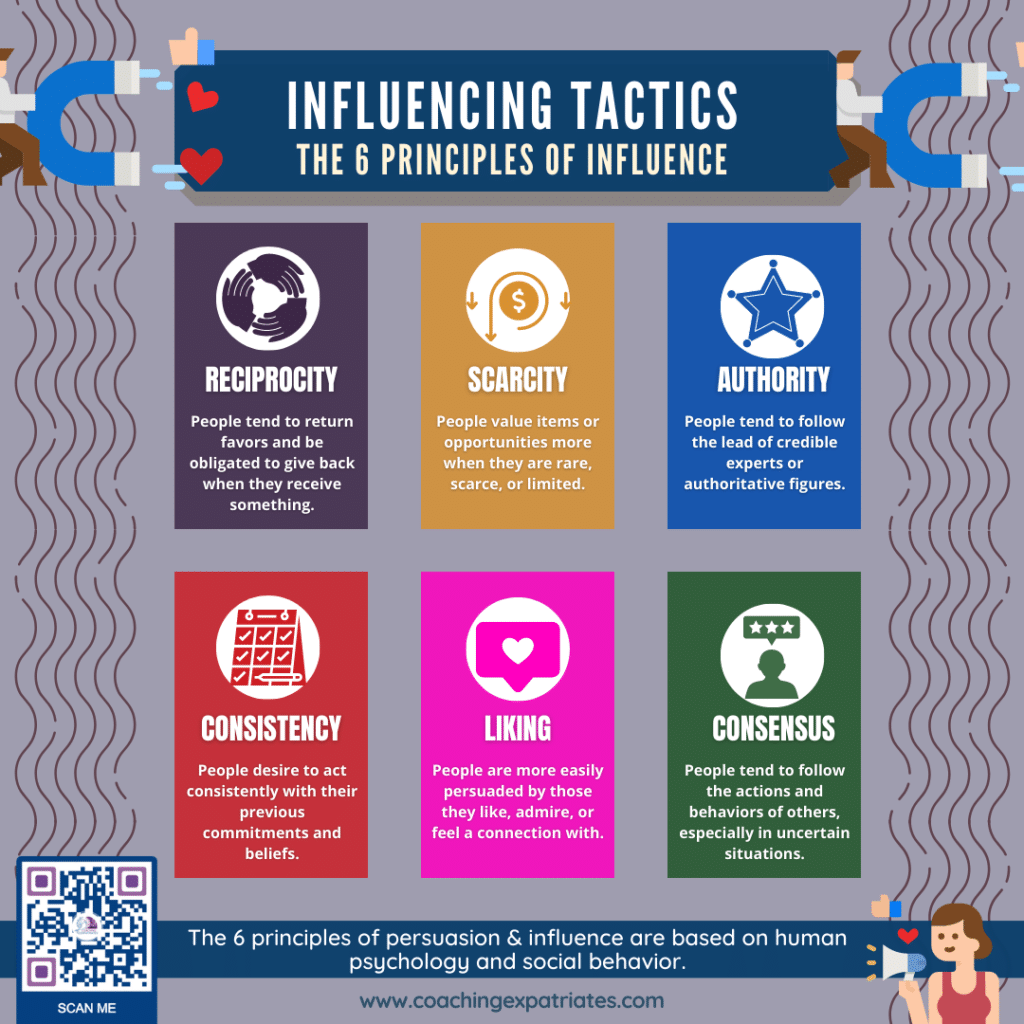
These principles are powerful tools to understand and influence human behavior. However, it’s crucial to use them ethically and responsibly, respecting the free will and autonomy of individuals in the decision-making process. Otherwise, as I mentioned in the previous section, it’s just manipulation.
The Lewis Model And The 6 Principles
If you have learned already about the different cultural behaviors based on the Lewis Model, I’d like to provide some insights about each of the 3 cultural categories engage with these principles.
The Linear active cultures, which are direct and task-oriented, make a lot of use of Authority and Scarcity in their influencing tactics. And this is because the tactics evolving these principles are usually more task-oriented than relationship or community-oriented.
The Multi-active cultures, are people-oriented and value emotions and relationships. As such, they make use of Linking and Reciprocity as their preferred influencing principles.
The Reactive cultures, which are not only people-oriented but community-driven, value relationships and harmony. Honoring commitments is also extremely important for these cultures. For them, social proof (consensus) and consistency are the influencing principles often used.
Note that, of course, all cultures make use of all principles, but I just wanted to bring to your attention their main preferences based on their cultural behaviors.
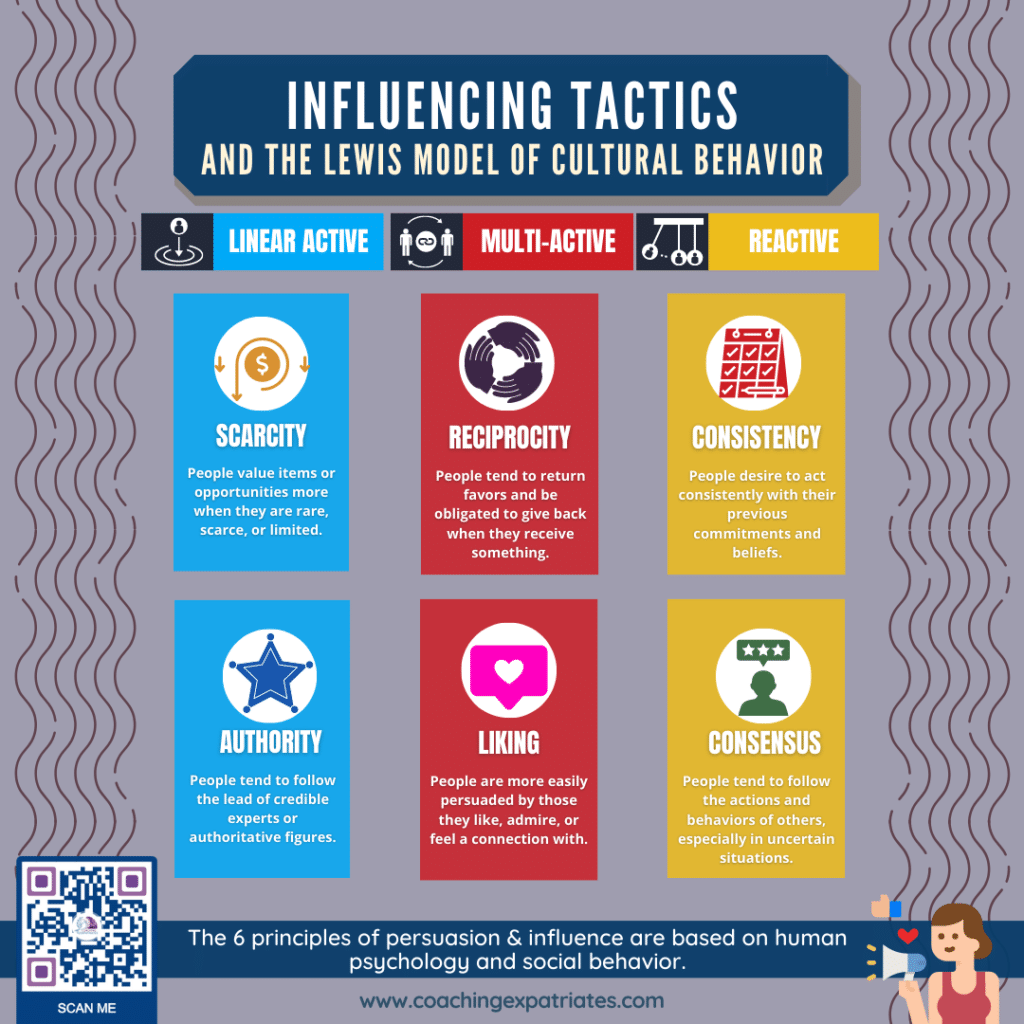
The ATTIC Model Of Influence
Created by Professor Kenneth G. Brown, the ATTIC Model, although not widely recognized in the traditional literature, is gaining attention as a practical framework for enhancing influencing skills. The ATTIC model, which stands for Agent, Target Audience, Tactics, Interest, and Context, emphasizes the role of the agent, understanding the target audience, employing effective tactics, appealing to interests, and considering the context to achieve impactful influence.
The framework follows a rational logic:
🕵️♂️ A: Agent 🕵️♂️
In the ATTIC model, “A” stands for Agent, which refers to the person or entity seeking to influence others. As an agent, you play a vital role in the influencing process. Your credibility, expertise, and personal characteristics all come into play. Here’s an example:
Suppose you’re a salesperson trying to convince potential customers to invest in a new product. As the agent, you need to establish trust and demonstrate your expertise by showcasing your knowledge of the product’s features, benefits, and success stories. Building rapport with the target audience is crucial for effective influence.
🎯 T: Target Audience 🎯
The letter “T” represents the Target Audience. These are the individuals or groups you are aiming to influence. Understanding their needs, desires, and motivations is key to tailoring your approach. Here’s an example:
Imagine you’re a marketing professional launching a campaign for a new line of athletic shoes. To influence your target audience effectively, you need to identify their preferences, aspirations, and pain points. By conducting market research and analyzing consumer behavior, you can create messages and experiences that resonate with your audience, increasing the likelihood of their engagement. We often think that listening to our target audience is useful in marketing or sales, but I’m here to tell you that this mindset must be used to understand all our stakeholders.
🎯 T: Tactics 🎯
The second “T” in the ATTIC model stands for Tactics in the attempt at influence. These are the specific strategies, tactics and techniques you employ to influence your target audience. Tactics can vary depending on the situation and desired outcome. Here’s an example:
Suppose you’re a team leader trying to influence your colleagues to adopt a new project management tool. Your tactics could include providing hands-on training sessions, offering one-on-one support to address concerns, and demonstrating how the tool can streamline their workflow and increase productivity. By using tactics that align with their needs and preferences, you enhance your chances of successful influence.
💡 I: Interest 💡
“I” in the ATTIC model represents Interest, which refers to understanding and appealing to the interests and motivations of your target audience. When you connect with their desires and values, they are more likely to be influenced positively because you are more at service to other people and their desires.
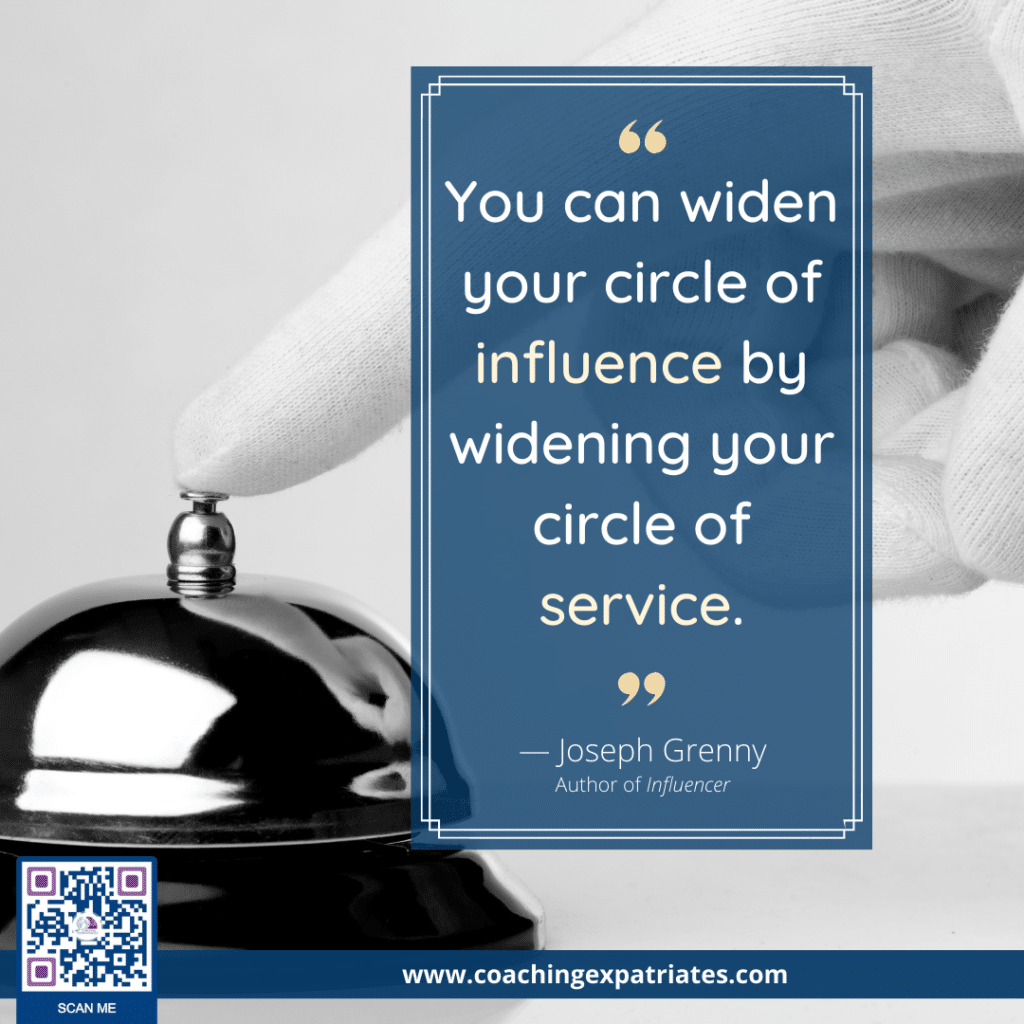
Here’s an example:
Let’s say you’re a sustainability advocate seeking to influence your community to reduce plastic waste. By highlighting the environmental benefits, cost savings, and long-term health impacts, you tap into their interest in protecting the planet, their financial well-being, and their own health. By aligning your message with their interests, you increase the chances of driving change.
🌍 C: Context 🌍
The final letter in the ATTIC model is Context. This refers to the specific environment, situation, or circumstances in which the influencing takes place. Context plays a crucial role in shaping your approach and understanding the dynamics at play. Some cultures value context even more, making it even more relevant during an influencing process. Here’s an example:
Suppose you’re a team member trying to influence your colleagues to adopt a more collaborative approach to multicultural problem-solving. The context of a team meeting provides an opportunity to share the success stories of other similar teams, highlight the benefits of diverse perspectives, and create a supportive atmosphere that encourages open communication. Adapting your influencing tactics to the context enhances effectiveness.
Harness The Power Of Your ATTIC !
The ATTIC model provides a comprehensive framework for effective influencing. By understanding your role as the agent, tailoring your approach to the target audience, utilizing tactics that resonate, appealing to their interests, and considering the context, you can wield your influence with precision. Remember, each element in ATTIC intertwines to create a powerful influencing strategy.
The 3 C's In Influence
When using the ATTIC model or any influencing model, you’ll create three types of responses or results in the party being influenced: conflict, compliance, or commitment. Let’s take a closer look at each of these effects:
💥 Conflict 💥
Conflict refers to resistance or a fight against an idea or influence attempt. The target of influence resists or fights against the presented idea, which can be seen as an influence failure. As we will talk about in a separate section of this guide, any negative emotions must be dealt with as soon as identified, before proceeding with using any other influencing tactics. In some non-confrontational cultures, like Asian and Latin cultures, conflict may not be openly shown, even if it is deeply felt.
Covert methods of conflict are also considered a form of conflict. Here are some examples:
- Ignoring your efforts
- Making excuses
- Seeking authority to overrule your decision or going behind your back
- Delaying action on your influence efforts
- Pretending to comply
- Sabotaging
Conflict may be more apparent and straightforward in cultures where it is more socially acceptable. This connects to the idea of high and low-context cultures in the contextual culture model. Low-context cultures, like Germans and Danes, tend to express conflict and resistance more openly because are cultures that don’t take things personally, while high-context cultures, like Chinese or Koreans, may be more covert about their internal conflicts with the influencing subject.
💪 Compliance 💪
Compliance occurs when the target of influence accepts the idea and performs the expected action. However, compliance doesn’t necessarily mean they are fully committed to it. They might comply due to fear of repercussions, convenience, or other external factors, without genuine commitment.
🤝 Commitment 🤝
Commitment is considered a success in influence. When the target accepts the idea and is genuinely committed to it, they are more likely to fully embrace and act on it. Commitment signifies a true change and complete buy-in.
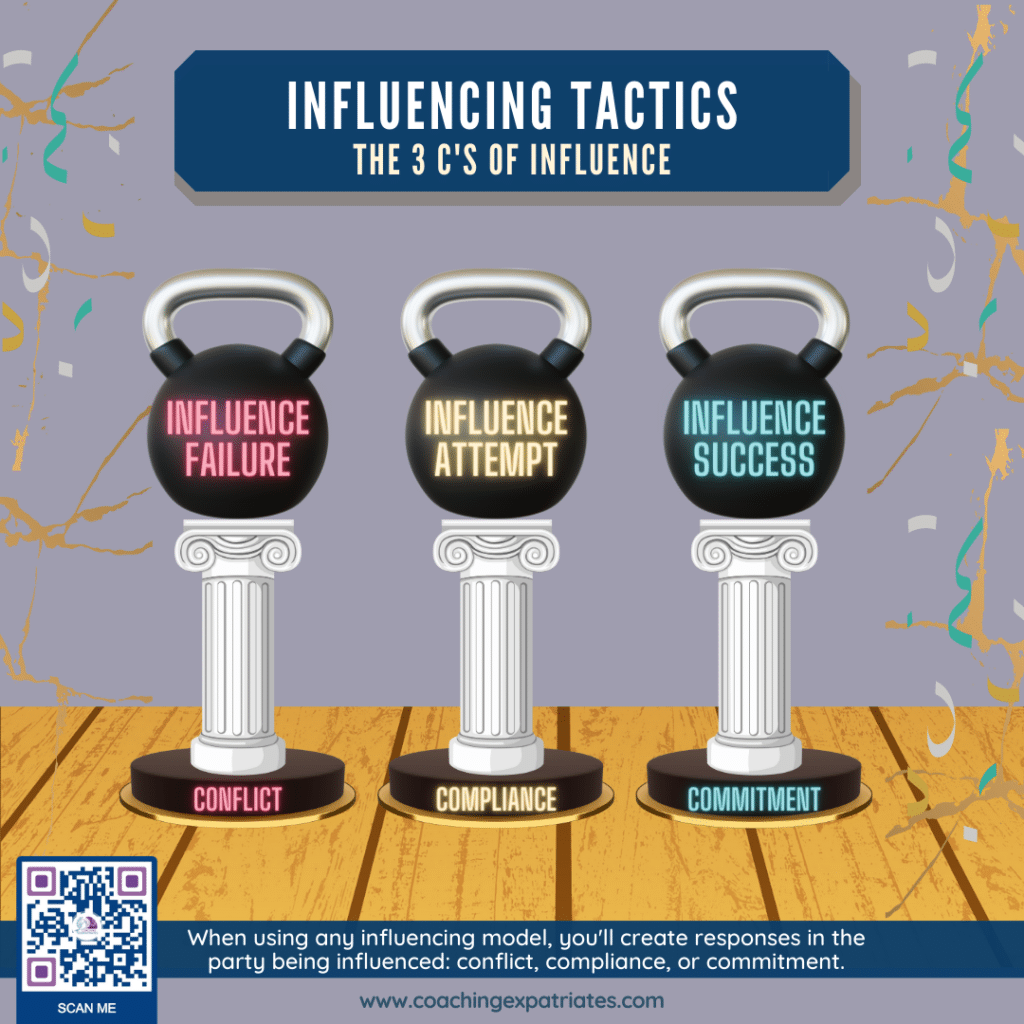
Mastering the 3 Cs in Influence
Understanding the three effects of influence – conflict, compliance, and commitment – helps us gauge the impact of our influencing efforts. While conflict is a challenge, our aim is to move toward compliance and ultimately achieve commitment. By employing effective influencing techniques, building rapport, addressing concerns, and aligning with the values and interests of the target audience, we increase the chances of generating commitment.
Influencing Tactics Categories
There is a wide range of influence tactics, but they can be broadly categorized into soft skills tactics and hard tactics. Soft skills tactics are centered around building rapport, understanding emotions, and connecting on a personal level. On the other hand, hard tactics rely more on assertiveness, logic, strategic thinking, and even pressure.
Let’s go over all the core influence tactics, starting with the Hard tactics first.
🌟 Hard Influence Tactics🌟
When it comes to influencing others, there are certain effective influence tactics known as hard tactics that can be employed. Let’s take a closer look at each of these tactics:
1️⃣ Exchange: This tactic involves making explicit or implicit promises of benefits and rewards in exchange for compliance with a request. It’s about creating a sense of reciprocity and offering something valuable in return. However, be careful as it can also be viewed as a form of bribe. Rewards as exchange are used as an acknowledgment of a wanted behavior, that would happen anyway. Bribe as exchange are used to force a decision on a wanted behavior that would not happen otherwise. There is a fine line between them in many situations, though. Plan your strategies and tactics carefully.
2️⃣ Assertiveness Tactics: Assertiveness entails repeatedly making requests, setting deadlines, and expressing frustration or anger towards those who do not meet expectations. It involves a firm and direct approach to driving compliance. In the communication world, assertiveness is seen as a good thing. But I want you to consider that sometimes being too assertive can exclude further understanding of emotions and deeper issues at play. Assertive tactics must be dialed up or down according to the situation your are in and the types of cultures you interact. Being too assertive with Latinos can scar them off and create further resistance. Being not assertive with Europeans will make them feel confused.
3️⃣ Legitimating: Legitimating is the use of legitimate power, authority, and position to convince others that they should comply with a request. By leveraging one’s position, this tactic aims to establish legitimacy and authority in influencing others. Cultures that rely on hierarchy, like the Japanese and Brazilians, might accept this tactic without too much resistance, while more egalitarian cultures, like Belgians, might feel suspicious that you are resorting to this.
4️⃣ Upward Appeal: This tactic involves seeking the approval and support of those in higher positions of power before making an influence attempt on someone. It relies on the influence of respected individuals to enhance persuasive efforts. It’s very similar to legitimating: cultures that rely on hierarchical structures, like the Chinese, might accept this tactic without too much resistance, while more egalitarian cultures, like the Finnish people, might feel suspicious that you are resorting to what they see as “political pressure.”
5️⃣ Pressure: Pressure tactics include the use of demands, threats, and intimidation to convince others to comply with a request. This approach creates a sense of urgency and uses assertive methods to gain compliance. Notice that I said compliance, not commitment.
6️⃣ Coalition Tactics: Coalition tactics involve seeking the aid and support of others to persuade someone to take a specific action. So it’s a social influence. It is similar to upward appeal but typically involves forming alliances or gathering a group of individuals to exert pressure collectively. This works well in collectivists culture, and sometimes somewhat well in individualistic cultures. The whole purpose behind Amazon’s star ratings relies on coalition tactics. Suppliers try to collect as many 5-stars as possible to convince other people also to buy the products.
How many times has someone at work used one of these tactics with you, and you ended up doing what they wanted but with reservations? Right? Do you remember how you felt?
✨ Harnessing Hard Tactics With Care ✨
While hard tactics can be effective in certain situations, it’s important to exercise them ethically and with consideration for others’ well-being. These tactics should be used judiciously and only when appropriate. It’s crucial to maintain respectful communication and ensure that the influencing process remains fair and honest.
By understanding the different hard tactics of influence, you gain insights into alternative approaches for achieving compliance. However, it’s important to remember that influence is most impactful when it is rooted in respect, empathy, and a genuine desire to create positive outcomes for all parties involved.
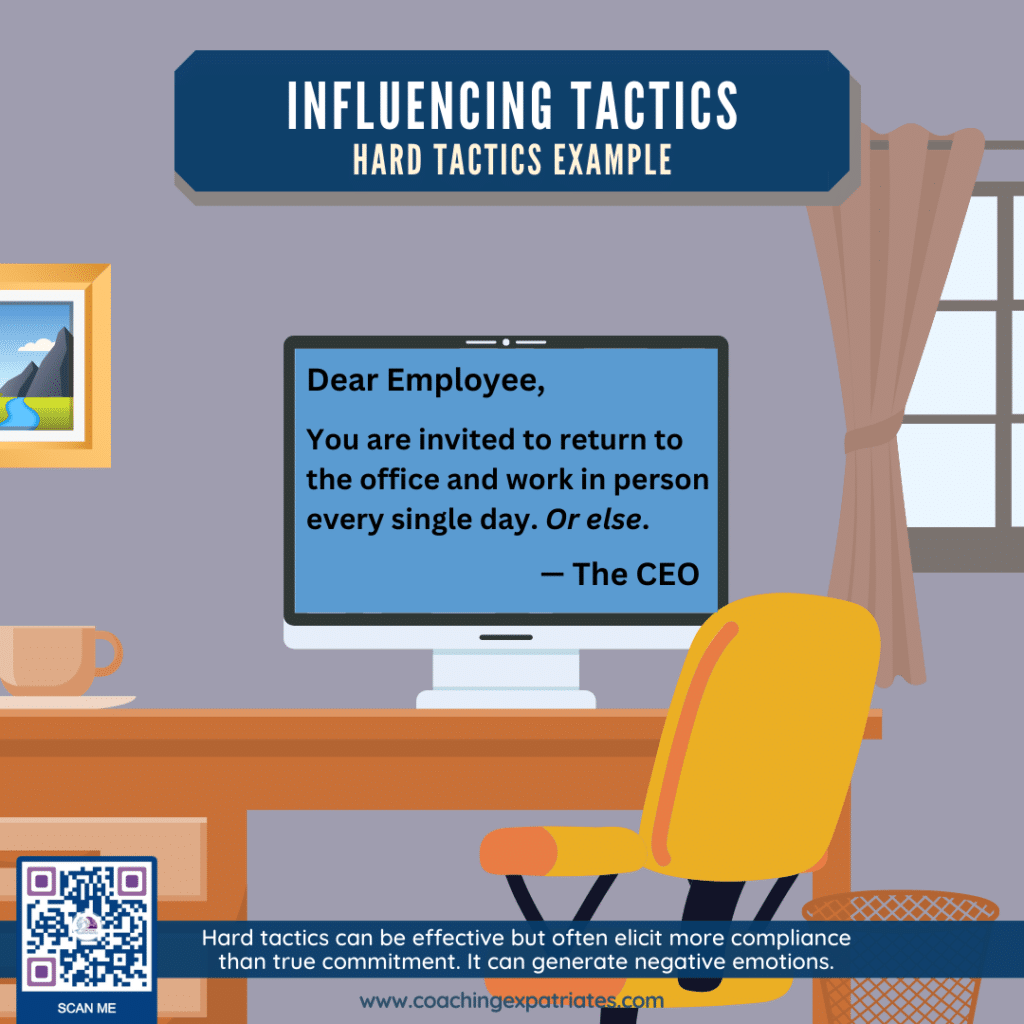
Now let’s go over the soft ones.
🌟 Soft Influence Tactics🌟
When it comes to being an effective influencer of others, soft tactics can be incredibly powerful and foster positive connections. Let’s explore each of these softer tactics:
7️⃣ Personal Appeal: Personal appeal involves asking a favor or relying on interpersonal relationships to influence behavior. It is commonly used in collective societies that thrive in high-context backgrounds. By leveraging personal connections and emphasizing relationships, this tactic aims to create a sense of trust and shared values.
8️⃣ Ingratiating: Ingratiating is the act of putting individuals in a positive mood or making them think favorably of you before making a request. It involves building rapport, being likable, and creating a positive impression to increase the likelihood of compliance. While some cultures will see ingratiating as cheesy, others, like the Chinese, will expect it. They actually don’t see it as ingratiating, but as acknowledging facts and accomplishments to show respect.
9️⃣ Consultation Tactic: The consultation tactic entails involving people, seeking their opinions, and encouraging their participation in decision-making and discussions. By including individuals in the process, this tactic fosters a sense of ownership and commitment, making them more receptive to subsequent requests or ideas.
🔟 Rational Appeal or Persuasion: Rational persuasion relies on logical arguments, facts, and evidence to persuade someone. This assertive tactic involves presenting a well-reasoned case and providing relevant information that supports the desired outcome. For example, using the 5WH on business cases could be seen as a rational persuation tactic. By appealing to reason and intellectual understanding, rational persuasion aims to influence through logical thinking and facts.
1️⃣1️⃣ Inspirational Appeal: Inspirational appeal makes an emotional request or proposal that taps into individuals’ values, ideas, and aspirations. By arousing enthusiasm and appealing to their personal beliefs, this tactic motivates individuals by increasing their confidence in their ability to succeed.
1️⃣2️⃣ Storytelling: Storytelling is a powerful tactic that involves using narratives to convey messages and influence behavior. Through compelling stories, experiences, or examples, this tactic captivates attention, creates emotional connections, and inspires others to take action or embrace certain ideas.
Now, let me ask you the same question as before: how many times at work has someone used these tactics with you? Do you remember how you felt?
The point I want to make is that hard tactics often make people feel negative things, and this is usually directed toward the agent – in this case, you, the one USING the tactics. Soft tactics, on the other hand, make people feel either neutral or positive about the influencing interaction, which creates better chances of yielding either compliance or commitment.
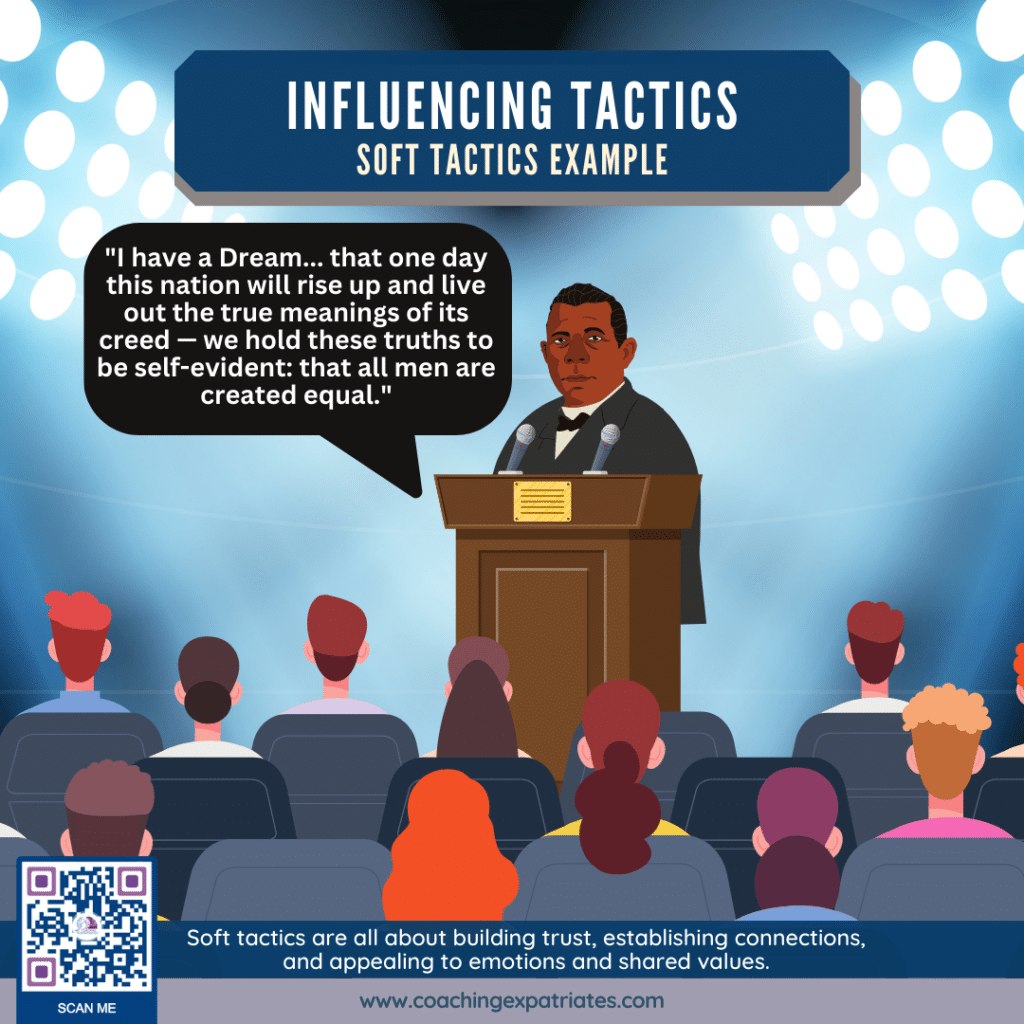
✨ Harnessing Soft Tactics For Positive Influence ✨
Soft tactics are all about building trust, establishing connections, and appealing to emotions and shared values. They provide a more empathetic and relationship-oriented approach to influence. When using these tactics, it’s crucial to genuinely care for others’ perspectives, actively listen, and maintain integrity in your interactions. By understanding and employing soft tactics of influence, you can create meaningful connections, inspire others, and foster positive change. Remember to always approach influence with authenticity, respect, and a genuine desire to benefit everyone involved.
Special Remarks On Soft & Hard Influencing Tactics.
Although it seems that using soft tactics is always better, that’s not always the case. There are some influence attempts that will never yield commitment, no matter how good you are at influencing. In these cases, soft skills will hardly work, even though they very often offer great support.
For example, let’s say you have a second-time offender in a bullying case at the company. It will be very hard for you to change someone’s personality. A person who is a corporate bully, no matter what you say, will always resort to bullying as normal behavior at first. You can only put them in check, at first, using hard influencing tactics and warning them about consequences. You can then use other tactics to help them change their behavior and habits through a longer process, like training, consistent coaching, and constant mentoring.
11 Influencing Tactics & Techniques You Should Have In Your Pocket
1. The Foot-in-the-Door Technique: This tactic involves making a small initial, easy request to increase the likelihood of compliance with a larger request later on. People might not know that this technique works because it leverages the principle of consistency. Use case: A charity organization could start by asking potential donors to sign a petition for a social cause, making it more likely for them to contribute financially when approached later.
2. Reciprocity: This tactic is based on the concept of giving and receiving. When someone receives a favor or gift, they feel obligated to reciprocate. People might not know that even small gestures can invoke a strong sense of reciprocity. Use case: A salesperson could offer a free sample of a product to a potential customer, triggering a sense of indebtedness that increases the chances of a purchase.
3. Scarcity: This tactic capitalizes on the fear of missing out by emphasizing limited availability or exclusive access to influence behavior. People might not know that scarcity is more persuasive when the availability is limited in both quantity and time. Use case: An online retailer could create urgency by promoting a limited-time sale with limited stock, encouraging customers to make quick purchasing decisions.
4. Social Proof: This tactic relies on the principle that people tend to follow the actions and behaviors of others, especially in uncertain situations. People might not know that social proof is most effective when the behavior of others is similar to their own. Use case: An executive utilizes endorsements and interview quotes from other employees and leaders, collected in advance, in their presentation about a new idea or business case.
5. Authority Cues: This tactic exploits the natural tendency of individuals to comply with those perceived as figures of authority or expertise. This tactic makes use of subtle cues and signs. People might not know that symbols or cues of authority can significantly impact compliance rates. Use case: A top exec displays rewards, awards, and badges prominently in their office, influencing potential visitors to see worthiness and expertise in their opinions.
6. Anchoring Effect: The anchoring effect is a cognitive bias in which people rely heavily on the first piece of information (the “anchor”) they receive when making decisions. People might not know that anchoring can be used strategically to influence perceptions of value. Use case: A real estate agent can set a higher initial asking price for a property, leading potential buyers to perceive subsequent price reductions as favorable deals.
7. Framing: Framing involves presenting information in a way that influences how it is perceived and interpreted. People might not know that subtle changes in framing can significantly impact decision-making. Use case: A marketing campaign for a healthy snack can emphasize the positive benefits of nutrition rather than focusing on the negative consequences of an unhealthy diet, appealing to health-conscious consumers.
8. Priming: Priming is the process of exposing someone to certain stimuli that can influence their subsequent thoughts, behaviors, or attitudes. People might not know that priming can occur at a subconscious level and affect decision-making without conscious awareness. Use case: A clothing store can play upbeat music and display vibrant colors to prime customers’ moods and increase their likelihood of making impulsive purchases.
9. Authority Bias: Authority bias, similar to authority cues, refers to the tendency to attribute greater credibility and trustworthiness to individuals perceived as authorities or experts. People might not know that authority bias can sometimes lead to blindly following advice or recommendations. Use case: A financial advisor can leverage their professional credentials to gain the trust of clients and influence their investment decisions.
10. Contrast Effect: The contrast effect occurs when the perception of an object or event is influenced by the presence of a contrasting object or event. People might not know that this effect can be used to alter perceptions and preferences. Use case: A car salesperson can show a high-priced luxury vehicle before presenting a moderately priced car, making the latter appear more affordable and enticing to potential buyers. Used along with the Anchoring Effect at the beginning of engagements, the Contrast Effect can be very powerful in many use cases and is often used as a sales tactic.
11. Emotional Appeals: Emotional appeals aim to influence behavior by evoking specific emotions in individuals. People might not know that emotions can play a powerful role in decision-making processes. Use case: An animal welfare organization can use heartwarming images and stories to elicit empathy and compassion in potential donors, increasing the likelihood of their contributions.
Practical Examples: When Influence Works Best
1️⃣ Example 01: Convincing your team to adopt a new project management tool
Best Tactics: Soft Skills Tactics. In this scenario: active listening to your team’s concerns, empathizing with their challenges, and storytelling to demonstrate the tool’s benefits. These tactics can help create buy-in and build enthusiasm.
2️⃣ Example 02: Persuading your colleagues to support a new initiative
Best Tactics: Soft Skills Tactics & Hard Tactics. Here, active listening and empathizing will help you understand their perspectives, while presenting logical arguments, providing evidence, and leveraging the authority of industry experts can add weight to your proposal.
3️⃣ Example 03: Influencing a potential client to choose your product over competitors
Best Tactics: Soft Skills Tactics & Hard Tactics. Here, highlighting the unique features and advantages of your product, presenting data-driven arguments, utilizing testimonials from satisfied customers or authoritative figures can make a persuasive impact, and using storytelling to instill an emotional appeal and connection.
Look, it’s important to adapt your tactics to each unique situation and maintain the utmost respect for others’ autonomy and well-being throughout the influencing process. Also, flex your tactics depending on the cultural context you are in. As we talked about, in some cultures, certain principles and its tactics work better than others.
Why Should We Incorporate Emotional Understanding In Influencing Tactings?
In the dynamic world of influencing, one element often underestimated is the emotional understanding and emotional regulation of the people involved in the influencing attempt. Let’s explore why incorporating emotional understanding into our influencing tactics is not just important but essential for achieving genuine commitment and positive outcomes.

🌟 Because #1: Address Negative Emotions For True Commitment 🌟
Picture this: You’ve successfully used your influencing skills to gain compliance from your team. However, there’s a catch—negative emotions have been left unaddressed. What happens next? While individuals might do what’s asked of them, their hearts and minds are not fully engaged. The result? Resentment and dissatisfaction that can brew under the surface.
🤝 Because #2: Build Bridges, Not Resentment 🤝
Incorporating emotional understanding means empathizing with the emotional landscape of those you’re influencing. When negative emotions are overlooked, they fester, leading to a lack of genuine commitment. This is where the real power of emotional understanding comes into play. By acknowledging and addressing negative emotions during the influencing process, you’re not only fostering a sense of validation but also preventing future resentment. This paves the way for authentic buy-in and commitment to your ideas or requests.
🚫 Because #3: Stay Out Of The Danger Of Unresolved Emotions 🚫
Neglecting emotional understanding in influencing can result in compliance that’s superficial at best. Individuals might carry out tasks begrudgingly or even resort to subtle forms of sabotage due to their negative emotions. The undercurrent of unresolved emotions can undermine collaboration, teamwork, overall morale, and even entire corporate cultures.
🔑 Because 4: Emotional Understanding Unlocks Positive Outcomes 🔑
On the flip side, when emotional understanding is incorporated, the impact is transformative. People feel valued, heard, and understood. They’re more likely to commit wholeheartedly, knowing their emotions have been taken into account. This translates into not just compliance, but enthusiastic participation and a willingness to go the extra mile.
✨ Because #5: Incorporating Emotional Understanding Leads To The Best Win-Win Strategies ✨
Incorporating emotional understanding into influencing tactics isn’t just about achieving results—it’s about fostering positive relationships and creating an environment where everyone feels valued. By addressing negative emotions head-on, you’re not just influencing actions, but also attitudes and behaviors.
It’s easier said than done, though. Now that you know how important a team’s emotional regulation is for influencing tactics, you’ll have to engage with key skills like different types of communication, cultural context knowledge, and a participative leadership approach to collect what the emotions and vibes are about your influencing attempt so that you can better understand it and address it.
So, next time you embark on an influencing journey, remember the power of emotional understanding. It’s not just a strategy; it’s a means to create lasting commitment, collaboration, and success.
Best Books On Influencing Tactics
Here are some books you should definitely check out if you want to go even deeper into the topic:
by Robert B. Cialdini | December, 2006
This classic explains A to Z of influence and is a must-read for any successful leader, no matter which industry or sector they work for. In the new edition of this highly acclaimed bestseller, Robert Cialdini explains the psychology of why people say yes and how to apply these insights ethically in business and everyday settings.
by Robert B. Cialdini , Nadja Baer, et al. | June, 2012
In this graphic adaptation of his best-seller, Robert B. Cialdini becomes society’s best hope in combatting compliance professionals throughout the world. He leads a team of special forces through a battleground filled with psychological sneak attacks designed to elicit pre-programmed responses from unknowing victims. Fun read for those who like to learn using comics.
by Kenneth G. Brown, The Great Courses | Audible Audiobook – Original recording
This is my absolute favorite resource when it comes to Influencing Skills, and I recommend it to all my clients who want to work on this topic. It takes you from strategy, to tactics, to actions, all related to influencing people in the different circumstances. What I like the most is that it helps you better understand when to apply certain tactics to the different types of situations, when most resources just cite the different types of of strategies, tactics and actions without showing how to apply them.
by Allan R. Cohen, David L. Bradford
What I like about this book is that it shows how to use the different tactics and actions of influence when you have to deal with people you don’t have any authority over. How many times we work in projects, collaborations and situations where we have to influence people that are peers or coworkers or stakeholders? Our influencing skills need to be sharp in these occasions because we cannot use any tactics related to authoritativeness, and this book talks about this.
by Robert B. Cialdini | September, 2016
This book is a great resource for influencing skills as it teaches important aspects of influence and persuasion that require some form of preparation, strategy and good communication. It shines a light on effective persuasion and reveals that the secret doesn’t necessarily lie in the message itself, but in the key moment before that message is delivered. For people wanting the psychological and communication twist of influence, this book will be a good read.
by Annette Simmons and Basic Books | October 2001
This book is a compelling guide that explores the transformative potential of storytelling in influencing and persuasion. With a blend of real-life stories, insightful analysis, and practical techniques, the book illuminates how stories engage emotions, transcend cultural boundaries, and resonate with diverse audiences. For global executives, this book serves as an indispensable resource, offering strategies to craft and deliver impactful narratives that inspire change, foster connections, and enhance their ability to influence effectively on a global scale. This was one of my most recent reads and I simply adored it.
Final Remarks
Mastering the art of effective influencing is an essential tool for any influential leader in global leadership to foster success when leading multicultural teams internationally. Understanding the six principles of influence by Robert Cialdini provides powerful tools for ethical persuasion: reciprocity, scarcity, authority, consistency, liking, and consensus (social proof). To apply these principles, key influencing tactics such as building rapport, framing messages to appeal to values, leveraging storytelling and data, creating a sense of urgency, and seeking input from stakeholders play a vital role in achieving desired outcomes.
In both personal and professional spheres, employing these skills can lead to genuine connections, improved communication, and win-win solutions. It is crucial to remember that influence should never involve manipulation; instead, it should be driven by empathy and a sincere desire to positively impact the lives of others while achieving common goals. Embracing these principles and tactics enables individuals to become masters of influence, propelling positive change within their sphere of influence.
If you are looking for a leadership development partner and consultant to help you implement some of the ideas in this guide, you can hire me as your executive and development coach. Have a Free Strategy Call with me. We will go over your specific stakeholder’s dynamics to grasp influencing opportunties, and devise together the top priority skills to develop, initiatives to address, and their plans & budgets. We will then implement them together during our coaching journey together.
If you are interested in developing specific global leadership skills, personally or team-wise, check out our online Global Executive Leadership Program. We go over all The Global Leadership Pillars™ during 9 online modules, specially meant for global leadership development. It’s a unique leadership training methodology that will change the way you think, relate, and strategize as a global leader.
If you enjoyed this post, consider subscribing to our newsletter using the form below. We focus on providing good content to global leaders and executives who want to make impactful business decisions and be more inclusive and influential. We know your inbox is sacred, so we email just once per week, and we never sell, rent or do anything funky with your information. Trust is the basis of Global Leadership, and we fully honor it.


